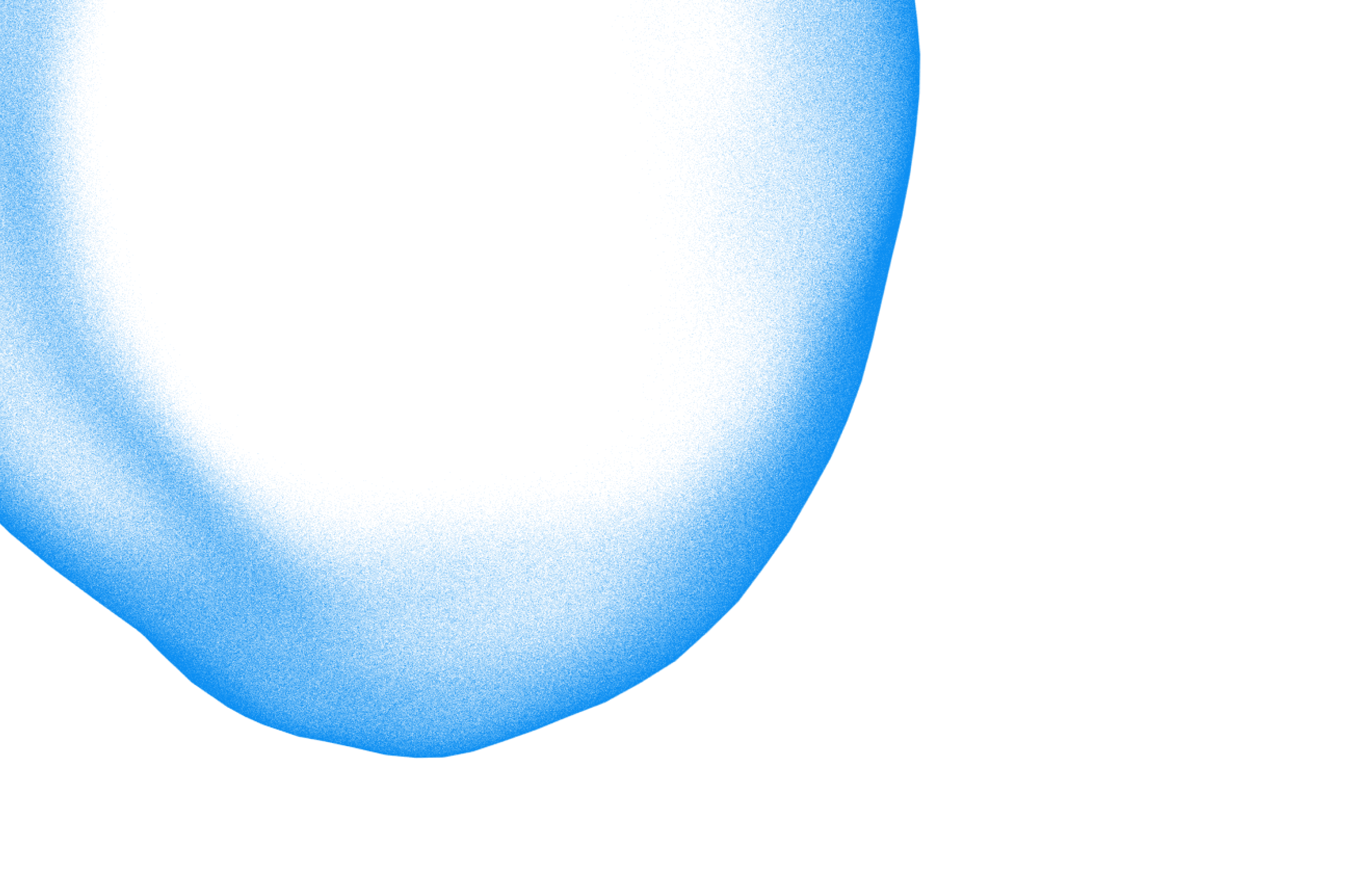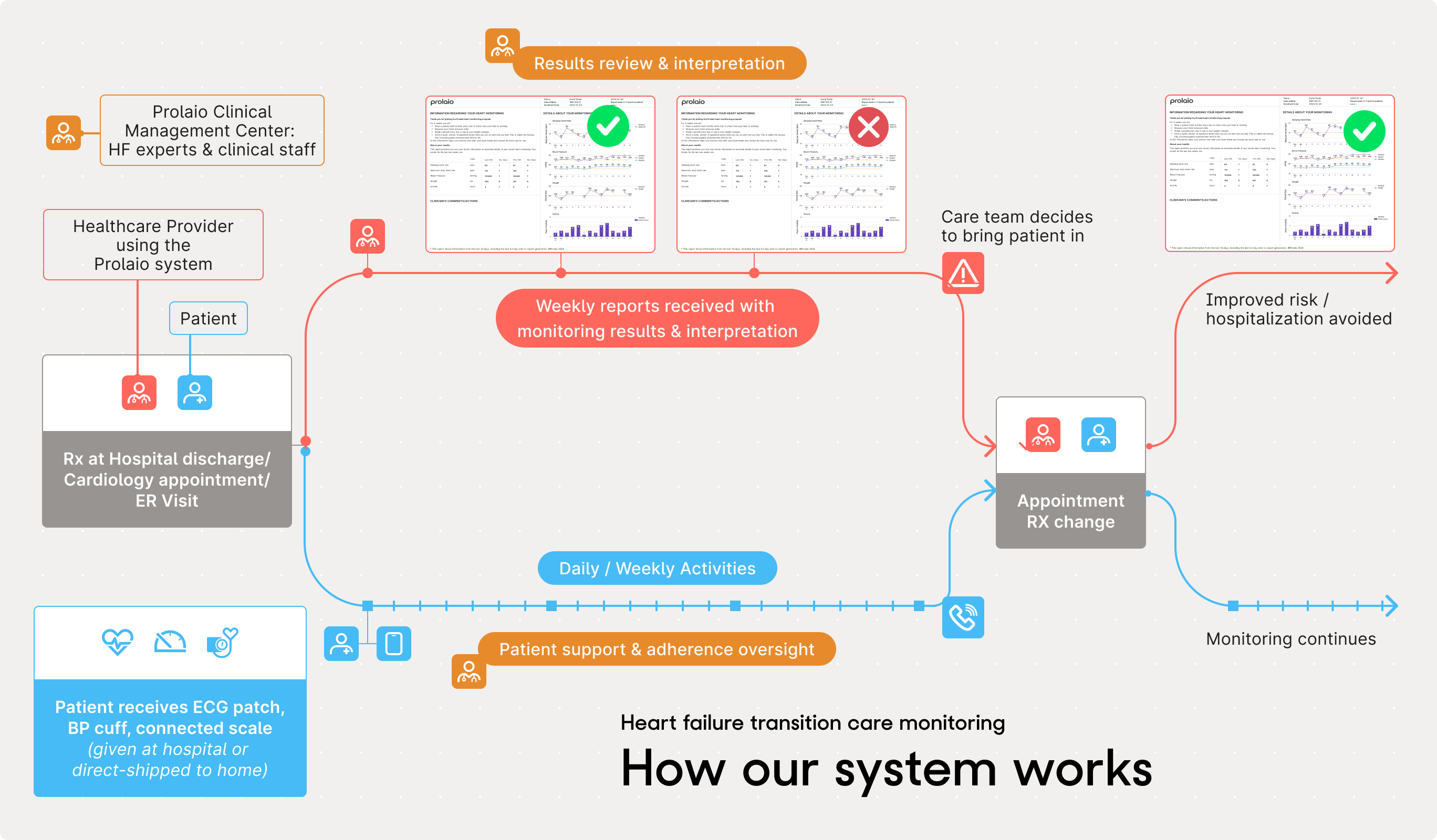
Smarter approaches to heart disease
Prolaio is working to improve heart health, starting with Hospital-to-Home Transition Care and Hypertrophic Cardiomyopathy solutions
A map to success.
Heart failure transition care
When patients leave the hospital after a cardiac procedure or an episode of acute heart failure, Prolaio can help care teams keep an eye on patient status by constantly monitoring health factors and assessing risk.
Patients begin heart monitoring with the Prolaio app as soon as they leave the hospital, utilizing an ECG patch, a blood pressure cuff, and scale, and periodic symptom questionnaires. Our mobile app guides patients through the monitoring process and gives them feedback on their progress.
The patient’s care team tracks their heart data, health factors, and risk assessments via scheduled reports and through the Prolaio Monitoring Workbench. If there are any signals of increasing risk, they can take action to see the patient and adjust their care, immediately.

Make your story count
HCM Progression monitoring
HCM is a life-long condition, and managing it is difficult for both patients and providers. Prolaio is working to make the disease more predictable and care more systematic.
Patients with an HCM diagnosis can use Prolaio to watch for indications that their symptoms could be increasing. Meanwhile, we’ll analyze data from all participants to create predictive tools to guide care transitions and detect problems.
We know that proactive HCM management is an enormous challenge, and we’re not there yet. But if enough people participate, there’s a good chance we can learn to see the signals of disease progression and risk, and help people manage HCM better in the future.
Patients self-enroll on the Prolaio website. Our medical team confirms eligibility, and then we send a kit to the patient’s home with the materials they need, like a wrist monitor, a blood pressure cuff, a scale, and ECG patches. Patients follow the steps in the quick-start guide supplied with the kit, and then they follow instructions in a mobile app for day-to-day activities. They receive monitoring results and can share them with their care team if they want, providing a more complete picture of their condition that can be used to shape treatment and wellness strategies.
